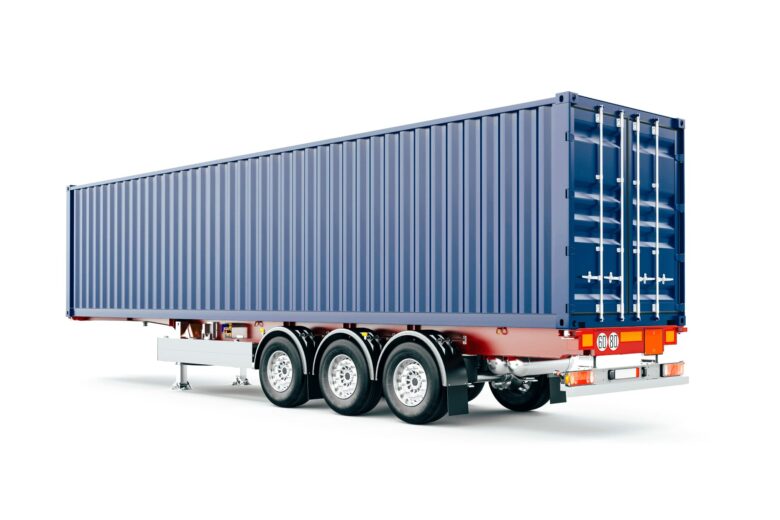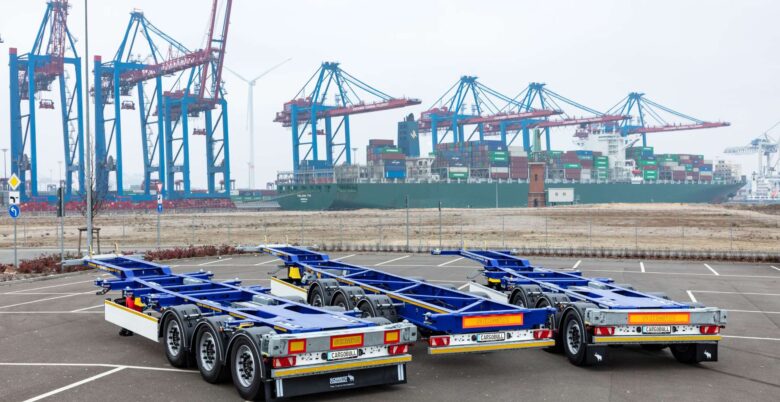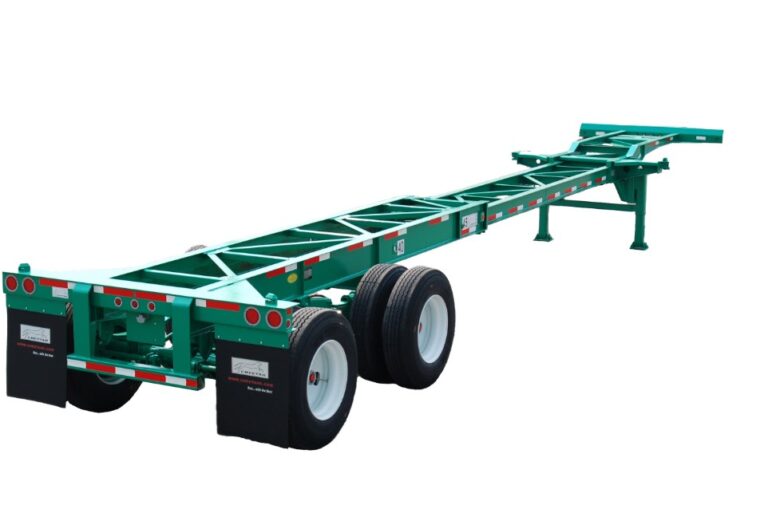In the realm of cargo transportation, the significance of selecting the right container size cannot be overstated. Container chassis, often overlooked but indispensable, play a crucial role in the global supply chain. Among these chassis, the 20-foot container chassis commands attention due to its versatility and widespread application. In this comprehensive exploration, we delve into the intricacies of 20-foot containers, unraveling their vital role across diverse industries.
We uncover their inherent advantages, such as adaptability and global standardization, while also acknowledging their limitations, particularly their suitability for smaller shipments. By gaining a profound understanding of the uses, benefits, and constraints associated with 20-foot containers, businesses can make well-informed decisions to enhance the efficiency and success of their logistics operations, ultimately facilitating seamless cargo transportation.
Cargo transportation relies heavily on one prominent option: the container chassis. These structures are specifically designed to transport various types of containers so that they are an integral part of the global supply chain. With a variety of sizes available, proper container size selection plays a significant role in optimizing cargo shipments.
Contents
Overview of 20-foot Containers

Source: container-xchange.com
Among the numerous sizes of containers available in the market, the 20′ container chassis stands out due to its standard dimensions and widespread use in various cargo shipment industries. With its optimal balance between size and carrying capacity, this type of container has become a popular choice for many businesses.
The dimensions of a standard 20-foot container are typically 20 feet long, 8 feet wide, and 8.5 feet high. This provides a considerable amount of space for various types of cargo, while still maintaining a manageable size for ease of transportation. The dimensions of these containers have been standardized worldwide to ensure compatibility with different modes of transportation, including ships, trucks, and trains.
The popularity of the 20-foot container is largely due to its versatility. Its dimensions allow it to accommodate a wide range of cargo types, from palletized goods to machinery parts and even personal belongings for international moves.
The size of the 20-foot container makes it suitable for both small and medium-sized businesses. It provides ample space to store goods without requiring as much space for placement or transportation as larger containers. This balance of capacity and size has led to its wide acceptance and use in the global supply chain, solidifying its position as a critical element in the logistics industry.
Common Uses of 20-foot Container Chassis
The 20-foot container chassis is commonly used in a variety of industries, including retail, construction, and agriculture. Retailers often use these containers to transport goods such as clothing, electronics, and household items. Construction companies employ them to move building materials, while the agricultural industry uses them for shipping produce or farm equipment. The transportation versatility of these containers allows a wide range of goods and materials to be moved efficiently and safely.
Advantages and Limitations

Source: cargobull.com
When it comes to the advantages of 20-foot containers, there are several key points that highlight their value and widespread use in various cargo shipment industries:
- Versatility ─ Their standard dimensions enable them to accommodate a wide range of cargo types, from palletized goods and machinery parts to personal belongings for international relocation.
- Standardization ─ The standardization of 20-foot container dimensions globally ensures compatibility across various transportation modes. Whether loaded onto a ship, truck, or train, the uniform size of these containers streamlines logistics and enhances transportation versatility and efficiency.
- Suitability for small and medium-sized businesses ─ 20-foot containers provide ample storage space without requiring as much placement or transportation space as larger containers.
- A key role in the global supply chain ─ The acceptance and use of 20-foot containers in the global supply chain underscore their importance in the logistics industry. Their size and carrying capacity make them a crucial part of global cargo transportation.
However, like any other tool or resource, 20-foot containers have some limitations:
- Limited capacity for large shipments ─ While these containers are optimal for small to medium-sized shipments, they may not be the best choice for large-scale shipments. Businesses with a significant amount of cargo may find the capacity of a 20-foot container insufficient and may need to choose larger container sizes.
- Not ideal for oversized items ─ These containers may not be suitable for exceptionally large or oddly shaped items, which would require specialized containers.
- Potential for higher shipping costs ─ If a company often ships small amounts of products, utilizing a 20-foot container may result in elevated shipping expenses.
By understanding the advantages of 20-foot containers, as well as their limitations, companies can make informed choices about whether to use these containers for their specific shipping requirements.
Choosing the Right Container Size

Source: cheetahchassis.com
Before selecting a container size, cargo volume assessment is crucial. You should evaluate the volume and weight of the goods that need transportation, as well as their physical dimensions, total weight, and the possibility of future changes in your shipping requirements.
For small to medium-sized shipments, 20-foot container dimensions provide ample space to securely transport your goods, while being compact enough for easy handling and transportation.
However, it is important to consider that while 20-foot containers are practical for many situations, they may not always be the optimal choice. For example, if you are handling larger shipments or unusually sized items, larger containers or specialized equipment may be necessary.
You should also consider other factors when planning your cargo transportation. They include the mode of transportation, transit times, and shipping costs.
Finally, choosing the right container size is vital, but equally essential is collaborating with a trustworthy supplier when acquiring containers. A reliable supplier can provide premium quality shipping containers that satisfy global standards, guaranteeing the protection and safety of your cargo while in transit.
In the dynamic world of cargo transportation, the choice of the right container size holds paramount importance. Container chassis, often the unsung heroes of the global supply chain, play a pivotal role in this endeavor. Among them, the 20-foot container chassis stands out for its versatility and widespread utilization. In this comprehensive exploration, we’ve delved into the intricacies of 20-foot containers, highlighting their indispensable role across diverse industries, their advantages, and their limitations.
By comprehending their uses, benefits, and constraints, businesses can make informed decisions to optimize their logistics operations, ensuring the efficient and secure transportation of goods. In an ever-evolving landscape, the right container size remains an essential tool for enhancing the efficiency and success of cargo transportation.
By understanding the container chassis uses, as well as its benefits and limitations, businesses can improve the efficiency and success of their logistics operations.
